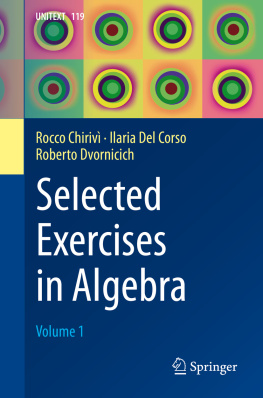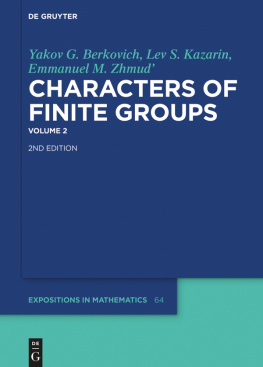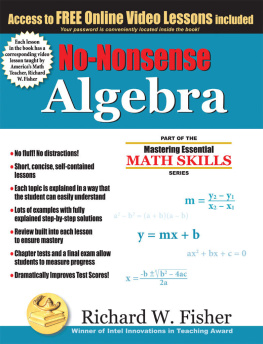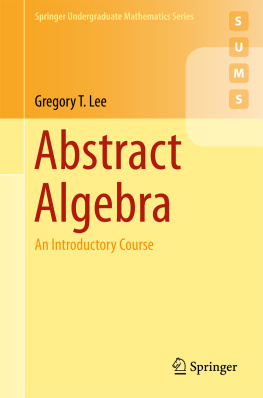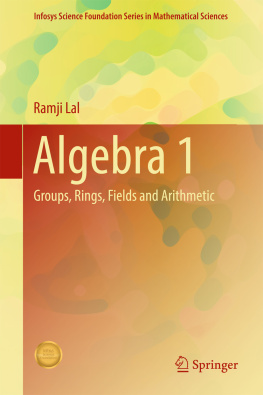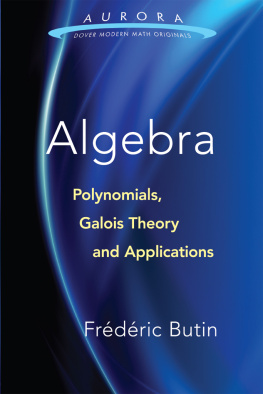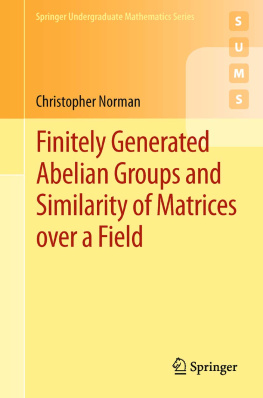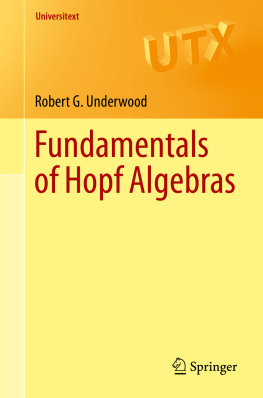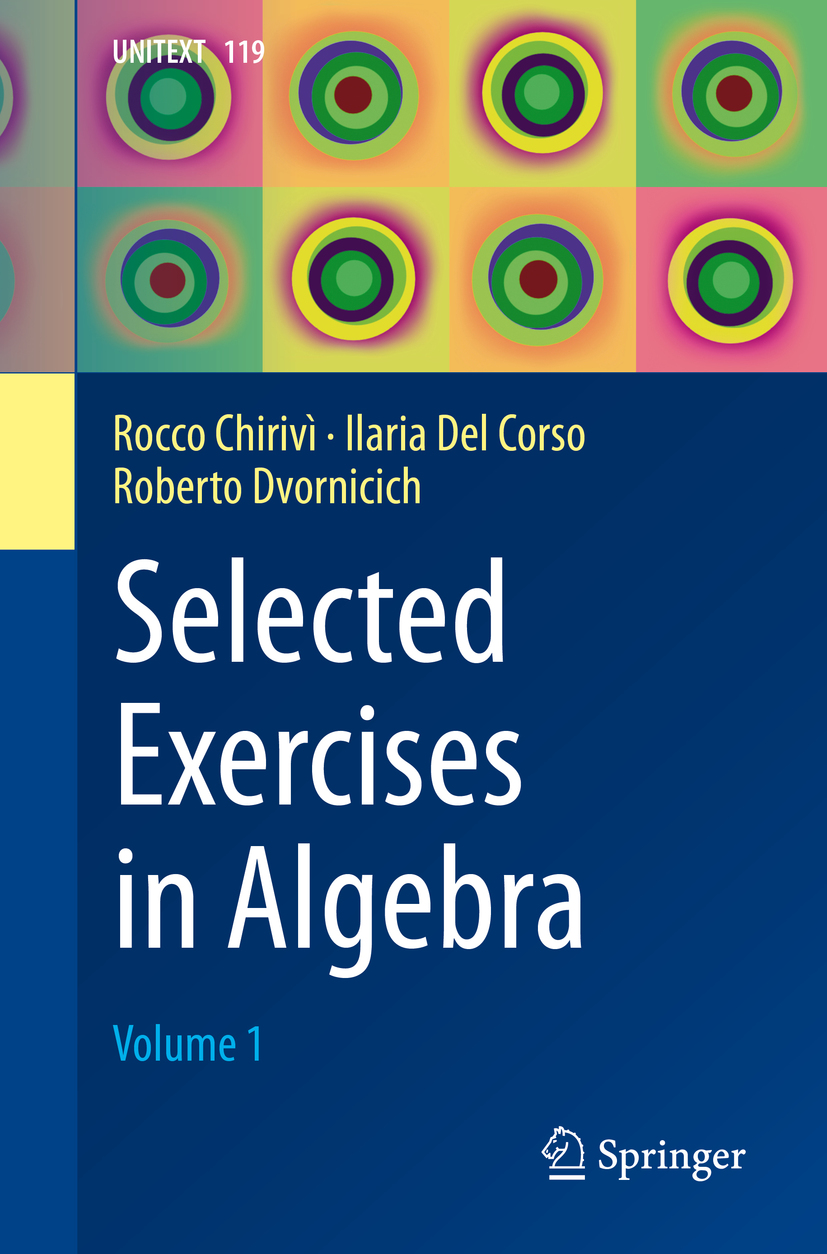Volume 119
UNITEXT La Matematica per il 3+2
Editor-in-Chief
Alfio Quarteroni
Politecnico di Milano, Milan, Italy
EPFL, Lausanne, Switzerland
Series Editors
Luigi Ambrosio
Scuola Normale Superiore, Pisa, Italy
Paolo Biscari
Politecnico di Milano, Milan, Italy
Ciro Ciliberto
Universit di Roma Tor Vergata, Rome, Italy
Camillo De Lellis
Institute for Advanced Study, Princeton, NJ, USA
Victor Panaretos
Institute of Mathematics, EPFL, Lausanne, Switzerland
Wolfgang J. Runggaldier
Universit di Padova, Padova, Italy
TheUNITEXT La Matematica per il 3+2series is designed for undergraduate and graduate academic courses, and also includes advanced textbooks at a research level. Originally released in Italian, the series now publishes textbooks in English addressed to students in mathematics worldwide. Some of the most successful books in the series have evolved through several editions, adapting to the evolution of teaching curricula. Submissions must include at least 3 sample chapters, a table of contents, and a preface outlining the aims and scope of the book, how the book fits in with the current literature, and which courses the book is suitable for.
More information about this subseries at http://www.springer.com/series/5418
Rocco Chiriv , Ilaria Del Corso and Roberto Dvornicich
Selected Exercises in Algebra
Volume 1
Rocco Chiriv
Dipartimento di Matematica e Fisica, University of Salento, Lecce, Italy
Ilaria Del Corso
Dipartimento di Matematica, University of Pisa, Pisa, Italy
Roberto Dvornicich
Dipartimento di Matematica, University of Pisa, Pisa, Italy
Translated by Alessandra Caraceni
ISSN 2038-5714 e-ISSN 2532-3318
UNITEXT
ISSN 2038-5722 e-ISSN 2038-5757
La Matematica per il 3+2
ISBN 978-3-030-36155-6 e-ISBN 978-3-030-36156-3
https://doi.org/10.1007/978-3-030-36156-3
Springer Nature Switzerland AG 2020
This work is subject to copyright. All rights are reserved by the Publisher, whether the whole or part of the material is concerned, specifically the rights of translation, reprinting, reuse of illustrations, recitation, broadcasting, reproduction on microfilms or in any other physical way, and transmission or information storage and retrieval, electronic adaptation, computer software, or by similar or dissimilar methodology now known or hereafter developed.
The use of general descriptive names, registered names, trademarks, service marks, etc. in this publication does not imply, even in the absence of a specific statement, that such names are exempt from the relevant protective laws and regulations and therefore free for general use.
The publisher, the authors and the editors are safe to assume that the advice and information in this book are believed to be true and accurate at the date of publication. Neither the publisher nor the authors or the editors give a warranty, expressed or implied, with respect to the material contained herein or for any errors or omissions that may have been made. The publisher remains neutral with regard to jurisdictional claims in published maps and institutional affiliations.
This Springer imprint is published by the registered company Springer Nature Switzerland AG
The registered company address is: Gewerbestrasse 11, 6330 Cham, Switzerland
The nice thing about mathematics is doing mathematics.
Pierre Deligne
To Andrea, who knows what mathematics is
Rocco
To Francesca, with a wish that she will be able to find and nurture her passions
Ilaria
To young people who already love or might come to love mathematics
Roberto
Preface
This is a book of exercises in algebra, accompanied by notes covering the relevant theory to be used as a reference for the solutions proposed. It is the result of several decades of experience of teaching the subject at the University of Pisa. It collects exam questions set over the years, along with their solutions.
The reason for us to write this book is the idea that Mathematics can only be learned byrediscoveringit, which is most effectively done by working out ones own solutions. Moreover, we believe these exercises possess some features that differentiate them from those of most other books. The first is the lack of duplicate questions: there are no exercises that only differ by the value of certain parameters, and whose solutions are hence essentially the same. The secondand perhaps crucialcharacteristic is that here no exercise is solved mechanically, by rote. On the contrary, solving each exercise requires a clever idea.
Anyone who has grappled with mathematics knows that this approach has a dramatic impact on both the level of challenge posed by a problem, and also on its intrinsic value. The insight gained by solving an exercise which requires an original idea is infinitely superior to what comes from merely applying methods we have learnt. We also like to think of the ideas necessary for solving our exercises as rather well assorted, a fact we believe is one of the main strengths of the book. In view of all this, one might wish to describe the present text as a collection of problems in algebra rather than exercises.
Because of the peculiar history of the University of Pisa, whose courses are also attended by students of the Scuola Normale Superiore, these exercises might at times be more difficult than the average exam questions at other Italian universities. This, however, is not at odds with the aim of the work, which is to develop problem-solving skills and prepare students for the study of algebra in the best way possible. We therefore hope that the reader will take this very important advice to heart: donotgive in to temptation and look up the solution to a problem if you have not spent a long time trying to solve it yourself. Understanding a ready-made solution, even an elegant one, does not foster real mathematical growth. As we have already mentioned, in order to learn mathematics one mustdomathematics. Actively seeking a solution is what expands our understanding and what lets us discover the links between concepts, the web of connections that are fundamental for true learning. We also hope to intrigue students and prompt them to dig deeper into the topics that are only briefly mentioned in each question.
The books structure mirrors the way that algebra is taught during the first years of a maths degree at the University of Pisa. This structure is the result of historical developments starting from the time when all basic notions in algebra were bundled into a single first-year course. Following the split of Bachelors and Masters degrees, those contents were divided into two: one part resulted in the first-year Arithmetic course, and the other, initially taught under the name Algebraic Structures, now constitutes the second-year Algebra 1 course. The two blocks correspond exactly to the two volumes of this book.
The volume dedicated to Arithmetic is mostly concerned with elementary tools such as induction, elements of combinatorics, integer numbers and congruences, followed by an introduction to the basic properties of algebraic structures: Abelian groups, rings, polynomials and their roots, field extensions and finite fields. In the second volume, which corresponds to the Algebraic Structures and Algebra 1 courses, we delve deeper into the theory of groups, commutative ringswith a particular emphasis on unique factorisationand field extensions, as well as introducing the fundamentals of Galois theory.

